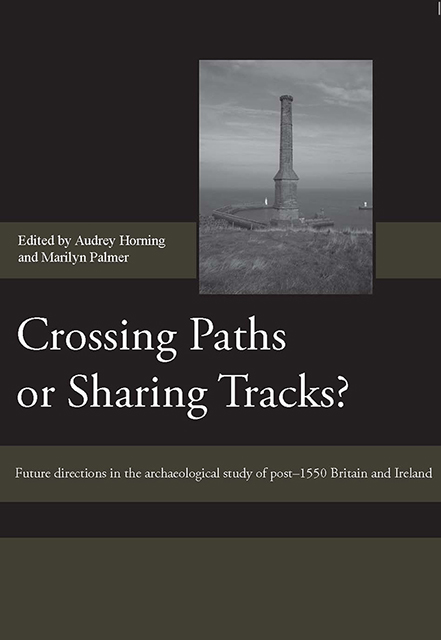 Crossing Paths or Sharing Tracks?
Crossing Paths or Sharing Tracks? The Changing Countryside: The Impact of Industrialisation on Rural Settlement in the 18th and 19th Centuries
Published online by Cambridge University Press: 07 March 2023
Summary
The little-studied topic of post-medieval rural settlement desertion and shrinkage is examined through the results of a series of disparate projects undertaken in southWales and north-west England. It concludes that many areas of settlement of post-medieval date in bothorigin and abandonment are incorrectly attributed to the medieval period. One of the primary causes of post-medieval shrinkage is considered to be industrialisation.
INDUSTRIALISATION AND SETTLEMENT
Industrialisation was a primary force behind new settlement formation in the post-medieval period. Less well known and little studied is the impact of industrialisation on settlement abandonment. In various regions of Britain during the 18th and 19th centuries rural settlements went into decline as people drifted away from rural areas to seek opportunities in areas of industrial expansion. All types of rural settlement were aff ected, from isolated farmsteads to nucleated settlements. For the most part, nucleated settlements experienced shrinkage rather than desertion. This chapter briefly examines the phenomenon of settlement shrinkage that appears connected to industrialisation in two areas, southWales and the north-west of England, and analyses its impact on our understanding of post-medieval rural settlement. The observations given are based in part on disparate projects undertaken over more than two decades. The investigative methodologies used vary according to the requirements of the individual projects, but recurring themes are recognisable. These include: industrialisation as a likely culprit in the process of settlement desertion and shrinkage; a lack of understanding about post-medieval rural settlement origins and abandonments; and a lack of documentary research in relation to earthwork sites leading to an often inaccurate assumption that visible earthworks are medieval in origin.
SETTLEMENT ABANDONMENT IN GLAMORGAN
In the mid-1980s, I excavated at a village called Llanmaes, in the Vale of Glamorgan in southWales. The excavation was targeted on a series of earthworks presumed to be of medieval date, though subsequent topographical analysis indicated that the excavated earthworks did not fit a regular medieval pattern of tofts and crofts (Fig. 17.1). A number of buildings were identified by the excavation and while medieval layers were encountered, these were stratigraphically earlier than the buildings whose origin dated to the later 17th century. The excavated evidence suggested that the buildings including two houses were abandoned by the end of the 18th century.
- Type
- Chapter
- Information
- Crossing Paths or Sharing Tracks?Future directions in the Archaeological Study of Post-1550 Britain and Ireland, pp. 221 - 232Publisher: Boydell & BrewerPrint publication year: 2009
